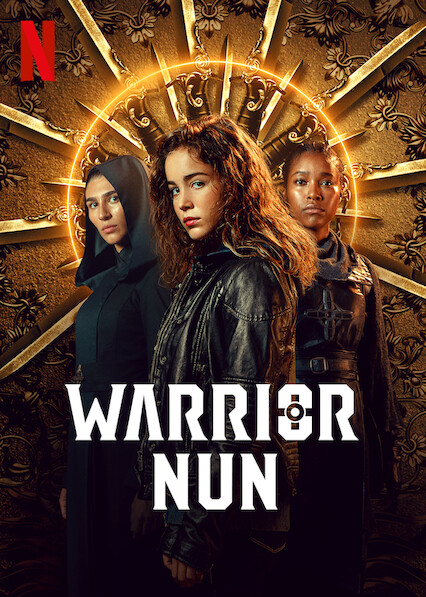Netflix’s Warrior Nun boasted trailers full of intrigue and promise, and its release on July 2 catapulted it to the third most-watched show on the streaming platform for the month of its release. Based on the 1994 comic book by Ben Dunn, the story revolves around a quadriplegic orphan who rises from the dead after she’s fused with an angel’s halo, granting her divine superpowers. Ava’s destined to lead a secret sect of nuns who’ve been hunting demons since the days of the First Crusade, but her heart is more focused on running off with the man of her dreams.
The issue is that Warrior Nun suffers from its own potential to be successful. The foundation of the series is strong: a powerful protagonist undergoing a delayed coming-of-age story, well-crafted choreographed fights, unique armour that doesn’t dive into the scantily clad division, and a diverse cast of characters that breaks far away from the Caucasian variety. A show about demon-slaying nuns sounds nearly impossible to fail, but the story is shrouded by lacklustre pacing, over-written monologues every few scenes, several instances of unapologetic ableism directed toward the formerly paralyzed protagonist, and an uninspired, literal war between science and the Catholic Church.
Several Netflix Originals appear to borrow from Stranger Things, arguably one of Netflix’s most successful productions, and Warrior Nun is no exception. Ava’s almost a direct replica of Eleven: a tragic, abusive backstory; an escape from said misery due to her incredible prowess; fashion sense inspired by prints and colours from the ‘80s; and the coming-of-age acceptance of her body, sexuality, and agency. It’s a formula that helps shape Ava into such a sympathetic, likeable character, but she feels misplaced in a plot that lacks originality and charm, and only serves to deliver a manufactured sense of connection.
For what it lacks in emotional depth, it attempts to make up for in little, interesting nuances. The background characters appear unfazed by the medieval attire or weapons worn by the nuns. In one scene, as two of the nuns are attempting to move through a security checkpoint, the nun wearing a large, long sword strapped to their back is unbothered while the nun holding two guns is stopped by security guards. The only person who regularly reacts to the peculiarity of the nun’s weapons and appearance is Ava herself. As well, the costume department made unique choices to dress the heroes in dark, black clothing and the antagonists in white, pristine outfits. Subverting the trope that black is equated with evil is at least one important step Warrior Nun makes in its otherwise uncompelling run.
But what sinks the show for me is how it situates its antagonists. In a world where the scientific community is now routinely condemned, dismissed, or ignored on social media, I’m just not interested in a story that wants to villainize them while upholding religious zealots as the true saviours of the world.
As creators, there’s an ethical duty to consider how one positions their antagonists, how their art ties into the world around them, and how it comments on the politics of today. When our doctors are routinely harassed online during a global pandemic and our climate scientists deemed liars by politicians, we have a responsibility to create critically — maybe with season two, the writers can focus on a more nuanced representation of the scientists, without waiting until the climax of the season to position them as allies.


